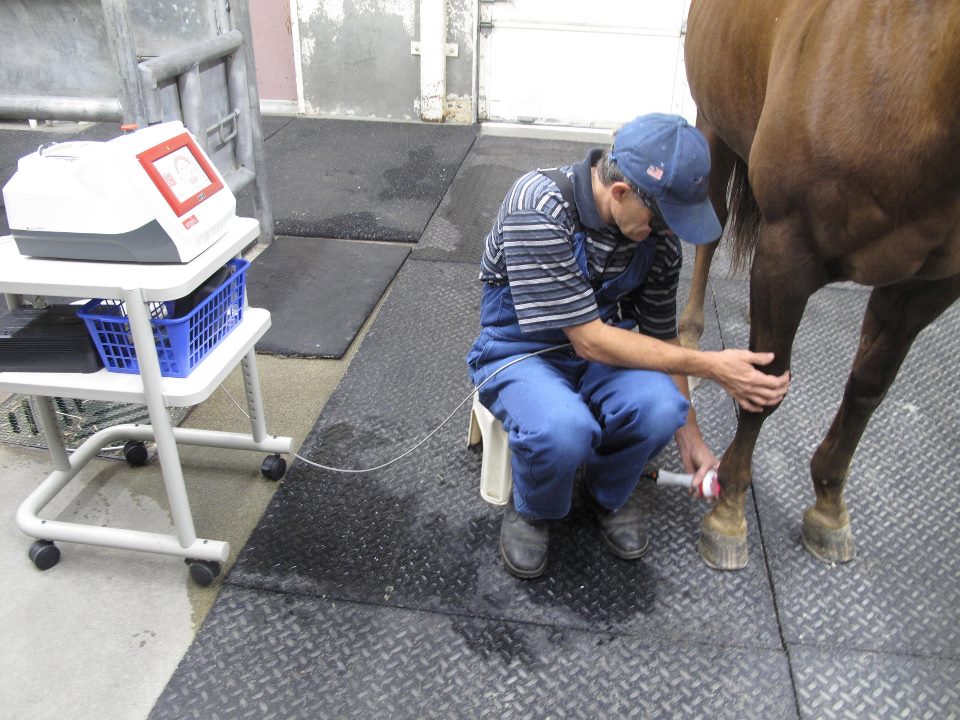Examining the Effectiveness of Laser Therapy in Horse Therapy for Injury Rehabilitation
The analysis of laser treatment's effectiveness in equine injury rehabilitation hinges on several aspects, consisting of recuperation time, pain mitigation, and tissue regeneration. Vets regularly observe premium outcomes with laser therapy compared to traditional techniques, placing it as a critical element in equine care. Equine Therapy.

Recognizing Laser Treatment
Laser therapy has become an essential device in vet medication, specifically in the therapy of equine conditions. Understood for its non-invasive nature and efficacy, laser therapy entails the application of specific wavelengths of light to promote cells repair and reduce swelling. This therapeutic technique is significantly favored for its ability to speed up the recovery procedure in steeds struggling with a selection of musculoskeletal injuries and chronic conditions.
The key device behind laser therapy is its ability to improve mobile features. Additionally, laser treatment advertises vasodilation, boosting blood circulation and oxygen shipment to broken cells, thus quickening healing.
In equine medication, laser treatment is specifically advantageous for conditions such as tendonitis, osteo arthritis, and wound healing. The method is admired for its pain-relieving properties, enabling steeds to restore flexibility and function a lot more swiftly. Veterinarians likewise value its minimal side impacts contrasted to various other treatment techniques, making it a dependable and secure choice for equine treatment.
Just How Laser Treatment Works
To understand exactly how laser treatment functions, it is important to look into the communication in between light power and organic tissues. Laser therapy, likewise referred to as Low-Level Laser Treatment (LLLT) or photobiomodulation, utilizes certain wavelengths of light to pass through cells and promote mobile processes. The device depends upon the absorption of photons by cell chromophores, primarily within the mitochondria, which are crucial for power manufacturing.
Upon absorption, these photons set off a series of biochemical modifications, enhancing mitochondrial function and resulting in boosted adenosine triphosphate (ATP) production. This increase in ATP increases cellular metabolism, advertising tissue repair work and regeneration. Furthermore, laser therapy modulates inflammatory reactions by impacting cytokine levels and decreasing oxidative tension, thus easing discomfort and swelling.
One more considerable facet of laser treatment is its duty in improving microcirculation. The therapy promotes vasodilation, boosting blood circulation and oxygen delivery to broken tissues. This facilitates the elimination of cellular particles and supports the spreading of fibroblasts and collagen synthesis, critical for injury recovery.
Clinical Proof
The effectiveness of laser treatment in equine therapy has been corroborated via various medical researches, showcasing its healing potential across a range of conditions. A research study carried out by Turner et al. (2012) showed that steeds treated with low-level laser treatment (LLLT) for ligament injuries showed increased recovery contrasted to those receiving conventional therapies.
In a similar way, research by Johnson and coworkers (2015) concentrated on equine muscle mass injuries, disclosing that laser therapy substantially quickened muscular tissue fiber regrowth and minimized muscle mass tightness. These findings were affirmed by histological analyses revealing better muscle mass cells company. Furthermore, clinical assessments have actually revealed that laser therapy can minimize persistent conditions such as osteo arthritis. A research by Smith et al. (2018) reported that equines with osteoarthritic joints experienced noteworthy pain alleviation and boosted variety of motion following a routine of laser treatment sessions.
Veterinarian Insights
Vet professionals have actually significantly recognized the value of laser treatment in equine treatment, pointing out both empirical evidence and direct experience. Dr. Jane Smith, a leading equine veterinarian, keeps in mind that laser treatment has revealed remarkable efficiency in lowering swelling and increasing tissue repair service. "In my practice, I have actually observed much faster recuperation times in equines treated with laser therapy contrasted to typical approaches," she mentions. This sentiment is echoed by Dr. John Doe, who emphasizes that laser therapy provides a non-invasive choice with marginal adverse effects, making it particularly fit for equine patients.
Veterinarians also appreciate the flexibility of laser therapy. She points out that laser therapy can be customized to the details demands of each steed, making certain optimum end results.

Practical Factors To Consider
A crucial aspect of applying laser therapy in equine treatment includes comprehending the functional considerations that guarantee its effectiveness and safety and security. It is essential to pick the suitable laser tool, as various kinds differ in wavelength, power, and penetration deepness (Equine Therapy). Veterinarians have to be well-versed in these criteria to tailor therapy procedures properly to each injury kind
Moreover, the frequency and period of laser therapy sessions need mindful planning to maximize restorative advantages while reducing any kind of potential negative results. Consistent tracking of the steed's response to treatment can assist essential adjustments in the therapy routine. Developing a safe and controlled atmosphere throughout therapies is also crucial to avoid unexpected exposure to laser discharges, which could harm both the steed and the handler.
Training and accreditation of workers carrying out laser treatment are extremely important to make certain appropriate technique and to maintain security standards. In addition, maintaining accurate records of each session, consisting of laser settings and observed end results, is essential for evaluating the overall effectiveness of the treatment and for making data-driven decisions.
Conclusion
Laser therapy has emerged as an effective modality in equine injury recovery, offering significant advantages Full Article in recuperation time, discomfort relief, and tissue healing. Clinical studies emphasize substantial renovations in problems such as tendonitis and osteoarthritis, credited to enhanced mobile feature and boosted ATP production. Veterinarian monitorings affirm these searchings for, highlighting exceptional end results contrasted to traditional therapies. For optimal outcomes, continuous surveillance and individualized treatment protocols continue to be crucial in leveraging the complete potential of laser treatment in equine treatment.
Comments on “Equine Therapy Success Stories: Real People, Actual Psychological Changes”